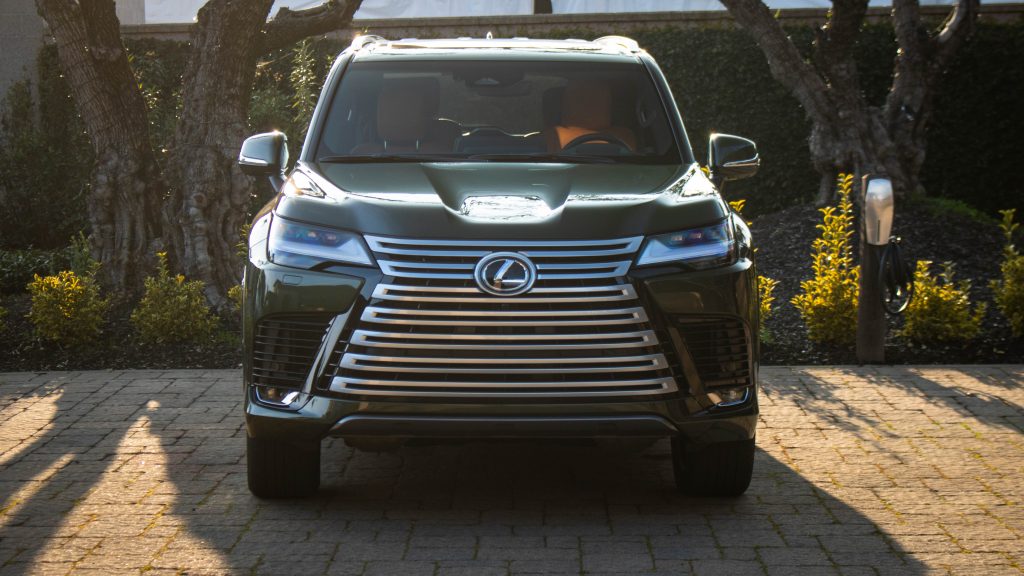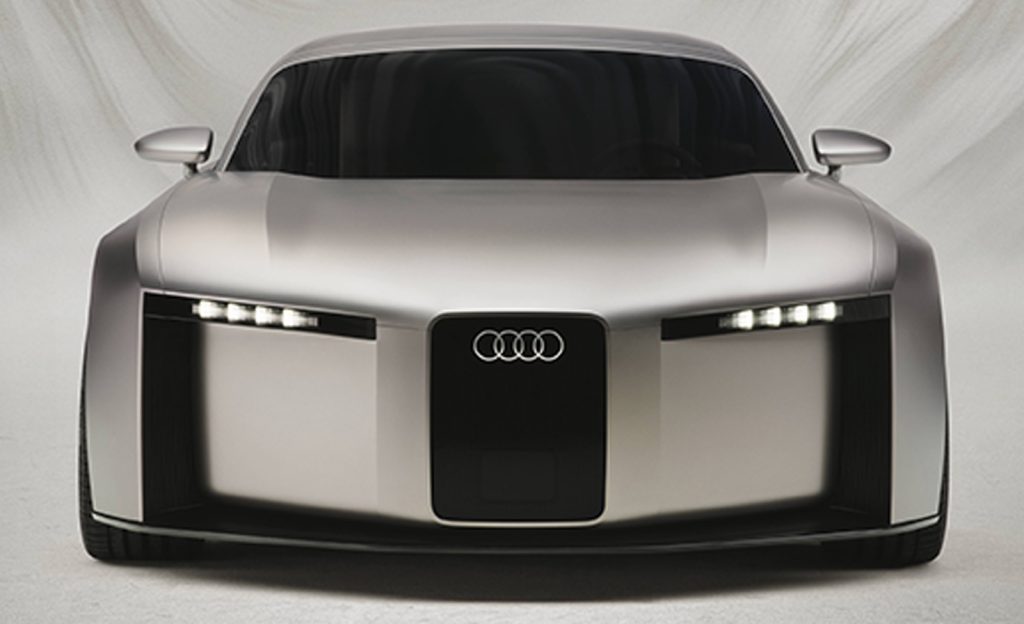It’s that time of year when some people buy a car and put a giant bow on it. It’s also the time of year when our deep personal beliefs start to sometimes come into conflict with those of our loved ones. I have a friend who is Happy Honda Days, and he married into a Lexus December to Remember family, and they’re making it work, but I’d be lying if I said it was always easy for them.
The Morning Dump doesn’t take a stand in any direction (Full disclosure: I’m non-practicing Ford Truck Month). I will, however, help you make some decisions if you’re heading toward the end of the year and you’re thinking about buying a new car. There’s a chart, and this chart is very instructive about what might be a good deal and what might not be.
Volkswagen considered building a plant in the United States for Audi in order to get around tariffs, but you need money to make investments, and VW is a little short on financing right now. Mazda also isn’t exactly flush with cash, but it’s coming out with an EV in North America for… reasons.
How are British automakers doing? JLR was en route to a very profitable year, but a cyberattack is about to take a huge bite out of the company’s prospects. Ineos, the company that makes Land Rover-looking trucks, is cutting back dramatically in order to save money.
Let’s dump!
It’s A Good Time To Buy A Jeep, Always A Challenging Time To Buy A Lexus

There are two charts that I look at to see what the total market picture looks like for cars. One shows Average Transaction Price (ATP) versus incentive spending, and this gives you a nice historical view of where prices are trending.

You can see the pandemic in there, you can see prices stabilizing out of the pandemic, and incentive spend coming back. You can sort of see the tariffs, but you can definitely see the little rise in price due to the high mix of electric cars sold before the expiration of the tax credit. That’s good for looking backwards, but here’s the chart, also from Cox Automotive, that I look at to make some predictions going forward:
This is “Days’ Supply,” which is a simple measure that looks at how much inventory a brand has versus how many days it takes for that brand to sell a car. On average, this number is 88 days (go SvG!), which is higher than the 50-60 days that usually signify a healthy balance between supply and demand. Anyone to the right of the average has a lot of cars, and anyone to the left of the line is a little tight, although there are a few standouts here that are worth talking about.
On the side of “we don’t have enough cars” are Lexus and Toyota. It’s pretty much always like this. While this is very model-by-model and dealer-by-dealer specific, anyone who has tried to buy a Toyota or Lexus at any point in the last few years isn’t going to be surprised by this chart. If you’re looking for a good deal from one of those two brands, you’d better be a great negotiator, because anything under 50 signifies that a brand is selling every car it can make.
For both Toyota and Lexus, this represents a huge amount of demand (they are great, popular cars) and also Toyota’s historic resistance to overbuilding at the risk of profits.
There are two obvious cars on the other end of the spectrum that you’ll notice. The first is Lincoln at 155 days. Lincoln, as a brand, had a strong 2024, thanks in part to the Lincoln Nautilus. Unfortunately for the brand, that car is made in China, and selling Chinese-built cars suddenly got a lot harder. This year, Lincoln has sold more Navigators, but Nautilus sales have dropped. In October, Nautilus’ sales plummeted 28.5% year-over-year.
Is this demand or supply? It’s probably both, as Cars.com shows a lot of cars which, matched to slowing sales, probably result in the increase. I think this means it’s a good time to make a deal at a Lincoln dealer on anything that isn’t a new Navigator.
Jeep, too, has a lot of cars, and this is probably some of both as well. Cox says that inventory for Cherokee, Compass, and Wrangler rose this month:
Looking at mainstream brands, recent inventory trends reveal that some manufacturers may be edging toward overstocked territory as consumer demand shifts. Cadillac’s days’ supply surged by 15% from a month earlier, signaling a potentially risky buildup if sales don’t keep up. Jeep’s situation is even more pronounced, with a 24% jump in days’ supply and a 13% increase in inventory, driven by models like the Cherokee, Compass and Wrangler, putting the brand at a high-water mark for 2025 and close to having more vehicles than the market might absorb.
For low-volume brands, Porsche’s inventory level rose 12%, a substantial increase that could lead to excess supply if demand softens. Even Mazda and Mercedes-Benz, with slower sales, are accumulating more vehicles on their lots, which may force them to rethink their strategies if these trends continue. Bottom line? Automakers are walking a fine line, and rising inventories could quickly shift from strategic flexibility to a liability if stock outpaces sales momentum.
If you are thinking about buying a car soon, I’d just look at this chart, and it’ll give you a reasonable idea of who may or may not be willing to deal.
Audi… Boy, I Don’t Know

I often wonder if there was someone at Audi HQ these last few years going: Yeah, yeah, all of this makes sense. What if we never changed anything important, made a bunch of also-ran electric vehicles, and just completely lost sight of what made us special?
Audi seems to sort of get it and is nodding towards getting its act back together. Unfortunately, the one source of consistent income for the company was selling Audi Q5s in the United States. Because that vehicle is built in Mexico and isn’t even USMCA-compliant, it’s sort of a disaster for the company. There goes any real possibility of a profit.
The solution for that would be to build a plant in the United States, but it’s not clear that Volkswagen can afford that right now, at least according to recent reports rounded up by Automotive News:
Volkswagen Group’s supervisory board has postponed the approval of its multi-billion-euro investment package, the German newspaper Bild reported, citing several sources from within the automaker.
The delay casts a shadow over future planning for new models and capital expenditure across its nearly 100 global plants.
Projects such as a potential Audi factory in the U.S. will be difficult to realize because the capital for it is not available, Bild reported.
VW has a financing gap of about €11 billion for investments for next year alone, Bild said.
The investment market is full-on shook right now, so raising all that money may not be as easy as it was a few years ago.
Who Is The Mazda EV For?

Mazda famously sold one of the most unlikely and unusable electric cars in the form of the super-low range, expensive MX-30. The company sells a RWD Mazda 6 EV in Europe, but it’s China-built, so that’s a nonstarter here.
The company has been testing a version of its EV in California, and Automotive News has the spy shots:
The body of the engineering prototype is a downsized version of the flagship CX-90 crossover.
The midsize EV could be unveiled as early as 2027 and go on sale in 2028. While EV adoption rates have slowed considerably in the U.S., the market remains Mazda’s biggest and most profitable.
Mazda declined to comment on specific future product programs but said its U.S. R&D team conducts routine testing of technologies and features that will help the company continue to provide the best experiences for customers.
More hybrids and, sure, maybe make an EV. I hope it’s good, but I don’t see how Mazda can make it affordable.
Ineos, Woof, JLR, Double Woof

I’m definitely in the bag for Land Rover. I am an admirer of the new Defender and was glad to see the company was on its way to a profitable year… until that pesky Cyberattack. And tariffs. Always tariffs.
The Range Rover maker said Friday its profit margin for the full year could now be entirely wiped out, having previously targeted as high as 7%. It now expects free cash burn of as much as £2.5 billion ($3.3 billion), after previously aiming for little change.
The company, owned by India’s Tata Motors Passenger Vehicles Ltd., slumped to a loss after tax of £559 million for the three months through September, compared to a profit a year earlier, in part due to £196 million of costs related to the hack.
How are things over at Ineos, which makes the Defender that doesn’t look like the new Defender but kind of like the old one? Per The Guardian, not great either:
The carmaker owned by the billionaire industrialist Jim Ratcliffe will make hundreds of job cuts across the company’s global workforce as his heavily indebted empire comes under increasing pressure.
Ineos Automotive did not specify an exact number of losses from its 1,700-strong workforce, saying only that it would shed “several hundred” head office staff across multiple locations, including the UK and parts of Europe.
The company owned by Ratcliffe, who also co-owns Manchester United, said the “strategic measures to structure its business” would help to simplify its head office and improve efficiency.
Building cars is hard.
What I’m Listening To While Writing TMD
David was very excited to tell me that Hilary Duff has a new song called “Mature.” I will always stan a fellow Houston kid who grew up in the ’80s. [Ed Note: Hilary Duff was my first celeb-crush when I was about…13. -DT]
The Big Question
You have $45,000 to buy a single new car. What are you getting?
Top photo: DepositPhotos.com for the dealership, Stock.Adobe.com for the guys










45k? Maverick Hybrid XLT AWD. With accessories. (I’ve pre-built one many a times, and I’ve gotten the total to like $41,000. 45 outta be enough.)